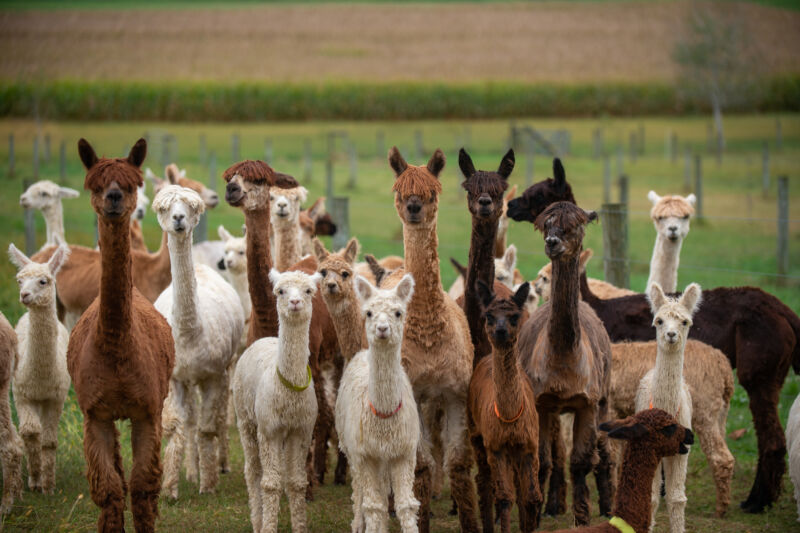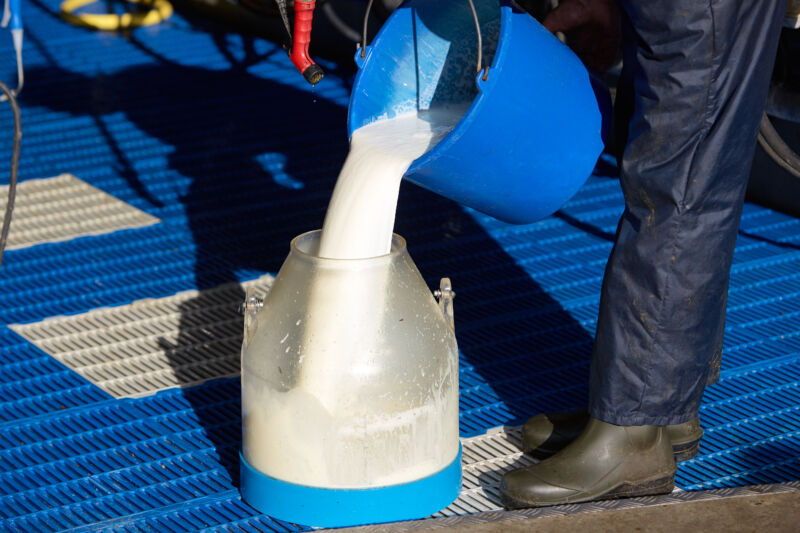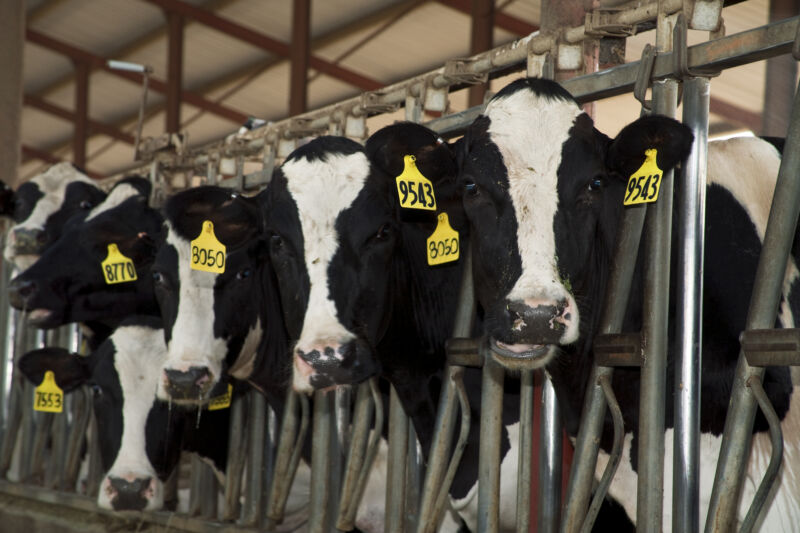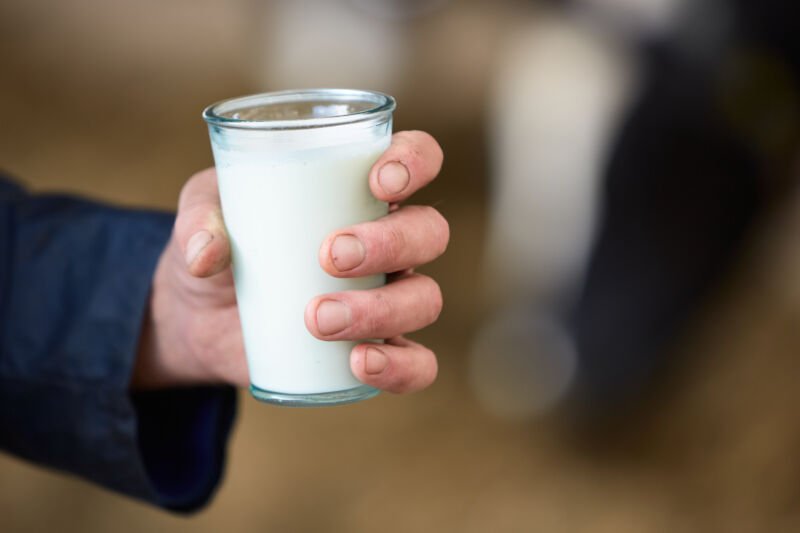Alpacas in Idaho test positive for H5N1 bird flu in another world first

Enlarge / Suri alpacas on a farm in Pennsylvania. (credit: Getty | Susan L. Angstadt)
Four backyard alpacas in southern Idaho have tested positive for highly pathogenic avian influenza (HPAI) H5N1, marking the first time bird flu has been detected in members of the fleecy camelid family, according to the US Department of Agriculture.
On Tuesday, the USDA announced that the agency's National Veterinary Services Laboratories confirmed the infection on a farm in Jerome County on May 16. While the infections are a first for the spitting llama relatives, the USDA said they weren't particularly surprising. The alpacas were in close contact with HPAI-infected poultry on the farm, which were "depopulated" this month. Of 18 alpacas on the affected farm, only four were found to be infected. There were no deaths documented, according to a report the USDA submitted to the World Organization for Animal Health.
Genomic sequencing indicates that the H5N1 virus infecting the alpacas (B3.13) matches both the virus currently circulating among US dairy cows and the virus that infected birds on the farm.


